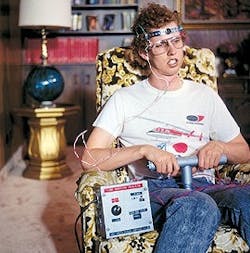By Agnes Shanley, Editor in Chief
Generation Y has a lot to teach us, if we listen. And its not always easy, as parents learn every day. I recently experienced this after watching the film, Napoleon Dynamite. The slow-moving, deadpan movie was excruciating to watch the first time, but the second time around I caught fleeting gems of humor and insight. Had my 13-year-old daughter simply worn me down, or had I actually learned something?
Although its primarily a coming-of-age story celebrating the revenge of the underdog, the movie parodies the mistake that many of us make with technology. It even offers lessons for those who would implement process analytical technologies (PAT), as well as newer disruptive technologies, for pharmaceutical manufacturing or any industry.
You might consider humming that tune the next time anyone at your company suggests using a new technology simply because its there. As Kip showed, anyone can expect too much from technology, or use it for the wrong reasons. Technology only works as part of an overarching plan for any drug manufacturing operation today, that plan must be control and optimization.
But it can be tempting, indeed, to focus on the technology itself. Especially when it is as interesting as two products that were introduced at last months IFPAC conference on process analytics. On their own, theyd make QC operations for drug making easier, since both would allow testing to be done immediately and inexpensively, without the sample extraction and preparation and the long lab testing time required.
- Ometrics (Columbia, S.C.) Spectrinline is based on multivariate optical computing, a concept pioneered by Michael Myrick, a chemistry professor at the University of South Carolina.
- Polychromixs (Wilmington, Mass.) new spectrometers use MEMs as diffraction grating beam elements. The result of research involving Honeywell, Sandia and an MIT engineering team led by Stephen Santuria, theyre light, small and easy to use, and cost a fraction of what conventional spectrometers fetch.
Its easy to marvel at such technologies based on the sheer ingenuity behind them. It would be tempting to invest in technologies like these as one offs in quality control, but they can achieve much more as part of an overall process control and optimization strategy.
Pharmaceutical Manufacturings mission is to emphasize the need to think outside of the technology box, and to take a holistic view of process control. PAT, after all, is only the gateway to this control and not the end of the journey, as we will show in Marchs issue with articles on biosimilars, biologics, advanced process control, and an interview with leaders of FDAs growing PAT team.
We also present results of our second annual career and salary survey. Those who are pioneering improved control and better ways of handling QC have been frustrated by the traditionalists who still outnumber them. Some have turned to conferences like IFPAC as a way to maintain their sanity. In the process, though, they may have failed to reach out to upper management, QC, IT and the shop floor, and convince them of their vision for improved control.
Thinking outside of the technology box will be as critical to your career as it will be to assuring your organizations future. Lets celebrate ingenuity, by all means, but keep the bigger picture in mind.






